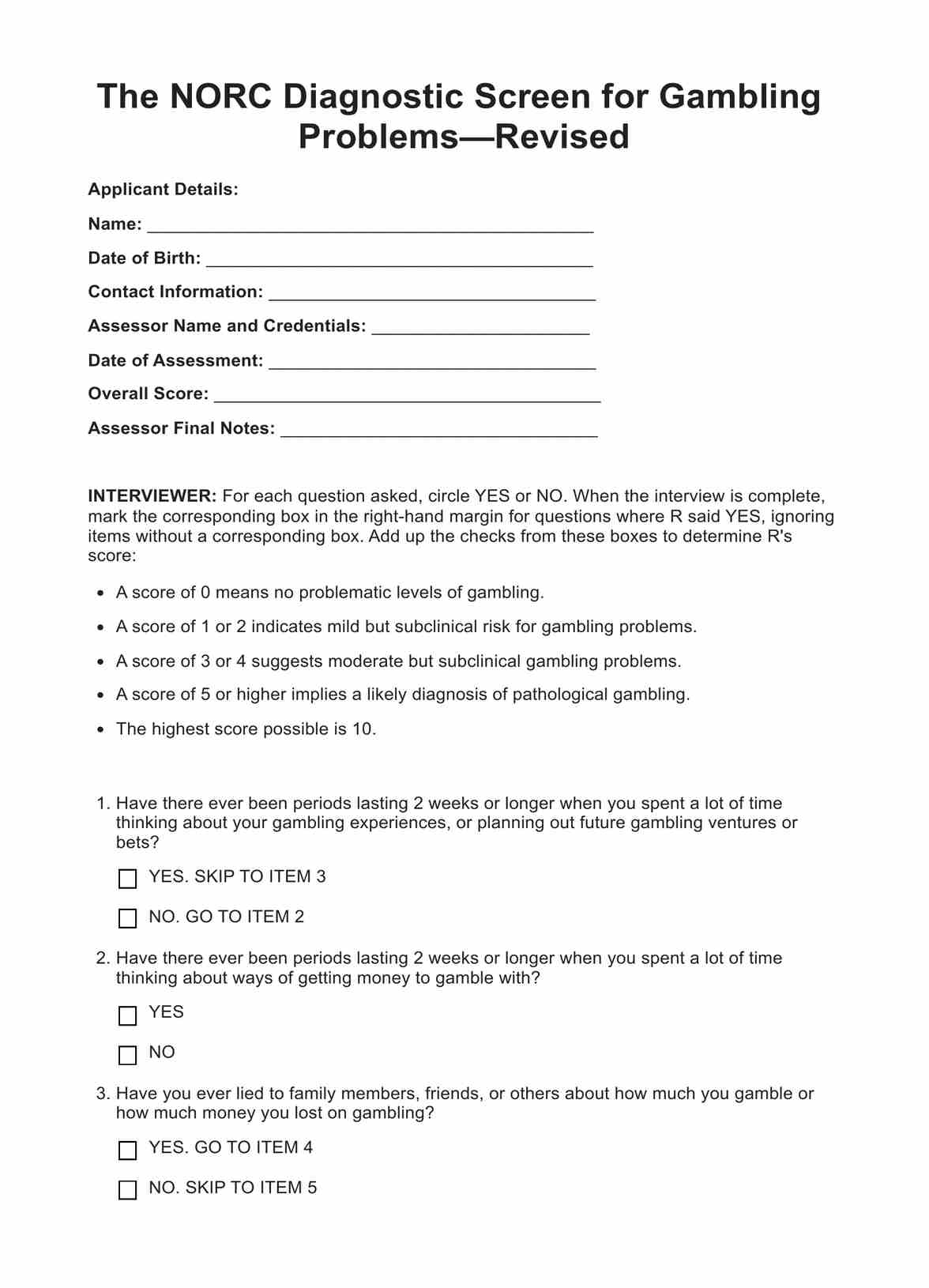Usually, it takes 15–20 minutes.

NORC Diagnostic Screen for Gambling Problems - Revised
Explore the use and benefits of the NORC Diagnostic Screen for Gambling Problems - Revised, a vital tool for assessing gambling disorders.
Use Template
NORC Diagnostic Screen for Gambling Problems - Revised Template
Commonly asked questions
It is used when assessing or diagnosing gambling-related issues is necessary.
This screening tool can be used by mental health professionals, addiction specialists, or even individuals under guidance.
EHR and practice management software
Get started for free
*No credit card required
Free
$0/usd
Unlimited clients
Telehealth
1GB of storage
Client portal text
Automated billing and online payments











